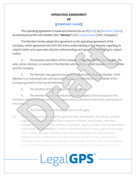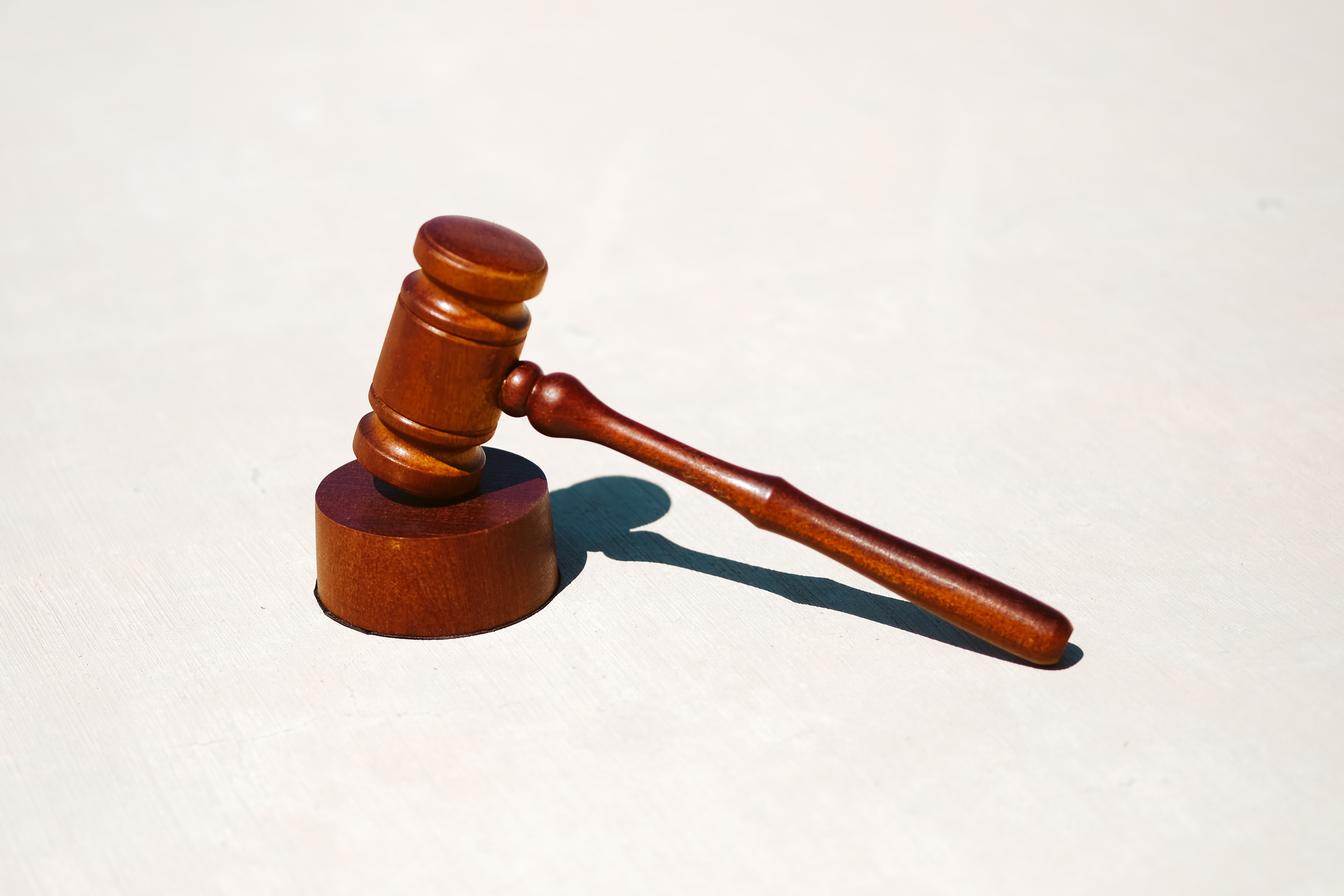Starting a Business Right: Navigate Legal Aspects with Confidence Using Legal GPS's Expertise
Embarking on the journey of starting a business is both thrilling and challenging, with countless factors to consider and DIY legal aspects to...
5 min read
LegalGPS : Jul. 26, 2024
As a business owner, you may have encountered situations where your rights are being infringed upon. Whether it's a competitor using your intellectual property without permission or someone spreading false information about your company, these actions can damage your business. Fortunately, there's a powerful tool that you can use to put an end to such harmful activities: a cease and desist letter.
In this comprehensive guide, we'll explain what a cease and desist letter is, why it's important for your business, and how to effectively write one using our customizable template. By the end, you’ll feel confident drafting a cease and desist letter that protects your rights and prevents further harm.


Cease and Desist Letter
Learn how to write a cease and desist letter to protect your rights and halt infringement or harassment effectively.
Trusted by 1,000+ businesses to safeguard their LLCs.
A cease and desist letter is a formal legal document sent to another party, typically demanding that they stop engaging in an activity that violates your rights or harms your business. This letter serves as a warning that you intend to pursue legal action if they do not comply with your demands. It’s often used as a first step in dispute resolution, allowing the recipient to recognize the seriousness of your claim before the matter escalates to a lawsuit.
Common Reasons to Send a Cease and Desist Letter>:
Intellectual Property Infringement>: Trademark, copyright, or patent violations.
Defamation or Slander>: Spreading false or damaging statements about your company.
Harassment or Stalking>: Harassing behavior directed at you or your employees.
Breach of Contract>: Violations of existing agreements.
Debt Collection>: Preventing unlawful debt collection practices.
A cease and desist letter can be an effective tool for protecting your business interests and preventing damage to your reputation. Here are some key reasons why it’s important:
In some cases, the offending party may not even realize their actions are infringing on your rights. A cease and desist letter educates them on the issue and notifies them of the consequences they might face if they do not stop. This formal notification can be enough to deter further misconduct and prompt the recipient to comply with your demands.
If the dispute ends up going to court, having documented evidence of a cease and desist letter shows that you made a good-faith effort to resolve the issue outside of the legal system. It signals to the court that you tried to solve the problem before escalating to litigation, which can work in your favor.
Taking action promptly shows that you value your brand and are willing to defend your rights. A well-drafted cease and desist letter sends a clear message that you are serious about protecting your business, which helps preserve your reputation and credibility in the market.
Writing an effective cease and desist letter involves a few crucial steps. Below, we’ve broken down the key elements to include in your letter to ensure it’s legally sound and persuasive.
Before drafting the letter, collect as much evidence as possible. This includes emails, screenshots, links, recordings, or any other material that supports your claim. Being thorough at this stage will strengthen your position.
Clearly identify the offending party, including their name, address, and contact information. This ensures that the right individual or entity receives the letter and understands the legal ramifications of ignoring it.
Explain your legal rights and how they are being infringed upon. If it’s a trademark violation, for example, specify your trademark registration and describe how the recipient is unlawfully using it. The more specific you are, the stronger your case will be.
Example>: “Our company holds the registered trademark ‘XYZ Brand’ (Registration No. 123456). You have used this trademark without authorization on your website and promotional materials, which constitutes infringement under applicable trademark laws.”
Navigate Startup Legalities Without a Lawyer
Clearly state that the offending activity must stop immediately. Be direct but professional in your demand.
Example>: “We hereby demand that you immediately cease and desist from using our registered trademark ‘XYZ Brand’ in any capacity.”
Give the recipient a reasonable deadline by which they must comply with your demands. This allows them enough time to assess the situation but also encourages a prompt response.
Example>: “We expect full compliance with this demand within 14 days of receipt of this letter.”
Make it clear that if they do not comply, you are prepared to pursue further legal action to protect your rights. This should be stated in a way that underscores your seriousness without being overly aggressive.
Example>: “Should you fail to comply with the above demands within the stated timeframe, we will have no alternative but to pursue all available legal remedies, including seeking an injunction and monetary damages.”
Request that the recipient provide written confirmation that they have complied with your demands. This will serve as evidence of their acknowledgment and compliance if needed in the future.
Before sending the letter, proofread it thoroughly to ensure it is free of errors. If you have any doubts, consider consulting with a legal professional. Send the letter via certified mail to confirm delivery, providing you with proof that the recipient received it.


Legal GPS Pro
Protect your business with our complete legal subscription service, designed by top startup attorneys.
Legal GPS offers a detailed cease and desist letter template to make the drafting process easier. Here’s how you can use it:
Determine the specific type of infringement or harmful behavior you’re addressing—whether it’s intellectual property misuse, defamation, or another issue. Knowing your exact situation will help you draft a more targeted and effective letter.
Use the template to input the recipient’s contact details, including their full name, address, and any other identifying information. Being as thorough as possible is essential for avoiding any ambiguity.
Clearly describe the actions that violate your rights. Our template provides prompts for specifying the violation, such as unauthorized use of a trademark, defamatory statements, or breach of contract. Customize this section to provide a full account of what occurred and how it affects your business.
Specify what actions you want the recipient to take—whether it’s to stop using your trademark, remove defamatory posts, or cease all contact. State these demands firmly and clearly.
Example from Template>: “We demand that you immediately remove all unauthorized references to our brand and refrain from using them in the future.”
Our template includes a section for you to inform the recipient of the consequences of non-compliance. Customize this to reflect your willingness to pursue further legal action, including the possibility of seeking damages or filing an injunction.
Specify a deadline by which the recipient must respond or comply. We recommend giving a timeframe of 14 to 30 days, depending on the severity of the issue.
Before sending the letter, take a moment to review and proofread it. Once satisfied, send it through certified mail to confirm delivery and obtain a receipt.

Cease and Desist Letter
Learn how to write a cease and desist letter to protect your rights and halt infringement or harassment effectively.
Trusted by 1,000+ businesses to safeguard their LLCs.
Using our customizable cease and desist template allows you to quickly draft a professional letter that effectively communicates your demands while providing legal protection for your business. Here’s why you should use our template:
Saves Time and Effort>: Skip the hassle of drafting a letter from scratch and use our structured template to create an effective cease and desist letter in minutes.
Ensures Legal Compliance>: Our templates are reviewed by top startup attorneys to ensure they meet legal standards and can serve as solid documentation in case of litigation.
Versatile and Customizable>: Tailored for a variety of scenarios, our template can easily be adjusted to meet your specific business needs.
The biggest question now is, "Do I need a business lawyer?” For most businesses and in most cases, you don't need a lawyer to start your business. Instead, many business owners rely on Legal GPS Pro to help with legal issues.
Legal GPS Pro is your All-In-One Legal Toolkit for Businesses. Developed by top startup attorneys, Pro gives you access to 100+ expertly crafted templates including operating agreements, NDAs, and service agreements, and an interactive platform. All designed to protect your company and set it up for lasting success.

Legal GPS Pro
Protect your business with our complete legal subscription service, designed by top startup attorneys.
|
Premium Template
Single-use Template |
Legal GPS Pro
Unlimited Access, Best Value |
|
|
| Choose Template | Learn More |
| Trusted by 1000+ businesses | |

Embarking on the journey of starting a business is both thrilling and challenging, with countless factors to consider and DIY legal aspects to...

Starting a new business is an exciting yet daunting process, with numerous legal challenges to navigate, documents to complete, and deadlines to...

Launching a startup involves navigating a maze of legal complexities, which can be daunting for entrepreneurs striving to focus on product...